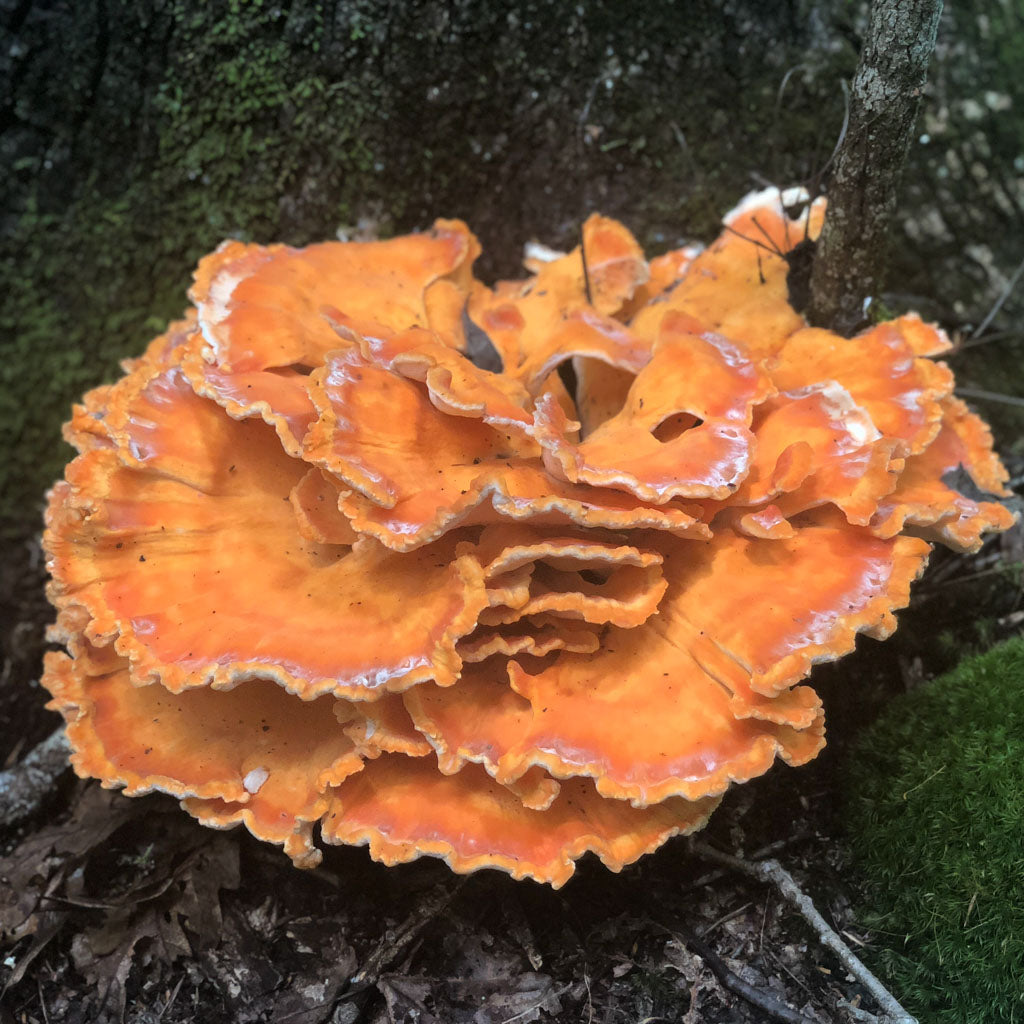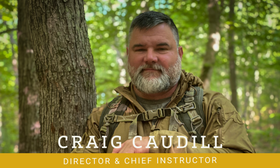
Tips for posting nature ID to social media for study
At Nature Reliance School our unofficial, but well used motto is “Come on, join in, let’s learn together.” Our approach is one where the instructors recognize that we have limits and because of that we make it a continual practice to research, study and learn. This includes topics that many would consider us experts in.
One of the best ways to do this is to be an active member of groups that have similar interest to your own on social media. There are many platforms out there, but the one that seems to be at “full steam ahead” is Facebook. There is a seemingly endless supply of groups for outdoor enthusiasts that range from trade groups, knife enthusiasts and those that are interested in identifying various things from the natural world.
It is this latter group that I wanted to address and offer my thoughts. Specifically, I wanted to discuss some helpful hints (not rules) for posting on plant, tracks, and mushroom identification. Wherever you are reading this blog post, please join the conversation and add to it in the comments section on what you think I am missing, or where you can add in help to others.
Here are some general points of consideration for any and all nature study when discussing with others online. I am focusing my attention today on when you share photos with the intent of getting help for identification purposes.
- Make sure when posting that you note where the photo was taken. No need to include the exact coordinates but if you could include the general area it would be most helpful (ie Central Kentucky, Northern Arizona, Florida swampland).
- If you could give a description (or even better, post a photo) of the area that surrounds the item you are wanting to
 identify. For example, “I took this photo in a forested area consisting primarily of hardwoods, I took this in an urban area where garbage cans were present). By simply taking another photo of the general area, it helps others to assist you in identifying it. The reason why is simple. Some species like well drained soils, other like tops of hills. Also some plants are shade tolerant, others are not. By detailing even a smidge of the immediate area you make it easier for others to help you.
identify. For example, “I took this photo in a forested area consisting primarily of hardwoods, I took this in an urban area where garbage cans were present). By simply taking another photo of the general area, it helps others to assist you in identifying it. The reason why is simple. Some species like well drained soils, other like tops of hills. Also some plants are shade tolerant, others are not. By detailing even a smidge of the immediate area you make it easier for others to help you. -
 Index everything as you are taking photos of. Meaning, give each item you photograph a size reference. This assists others in understanding the size of the item they are looking at on their screen. This can be a hand, pencil, lighter etc. Each of us knows the basic size of these items. To be more direct you can use a ruler and show the exact measurements of the item. Please note that almost all nature guides (such as the Peterson Guides) have a ruler placed on either the front or back cover of their books. This is a good way of taking one item afield and using it for multiple purposes.
Index everything as you are taking photos of. Meaning, give each item you photograph a size reference. This assists others in understanding the size of the item they are looking at on their screen. This can be a hand, pencil, lighter etc. Each of us knows the basic size of these items. To be more direct you can use a ruler and show the exact measurements of the item. Please note that almost all nature guides (such as the Peterson Guides) have a ruler placed on either the front or back cover of their books. This is a good way of taking one item afield and using it for multiple purposes. - If you choose to use an forensic ruler then please note that the circles are there to help maintain proper perspective. When the photograph is taken the circle on the ruler should be a perfect circle in the photograph. If it is skewed it indicates there is an angle to the photograph.

Sometimes too much light can obscure the photo as with this picture of a canine track.
Here are some general points when photographing and sharing photos of tracks.
- At minimum one photo should be taken directly over top of the track if possible. This photo should include a

tracking tadpoles in a puddle
forensic ruler or other tool to give an indicator of size. For example, a mountain lions track is similar to a house cat. For those that are new to tracking the two will look nearly the same unless there is something to indicate size.
- Add a light source to the size of the track in various directions. Your purpose in doing so is to create a shadow effect that helps to bring details in a track. The sun will sometimes do this for you, but if not, use an alternate light source like a flashlight or the suns reflection off of a mirror or similar object.
- When possible photograph multiple tracks, especially if you can see a gait pattern. Gait patterns not only indicate the acceleration of an animal but will sometimes narrow down the species of an animal. For example, coyote trails are often more narrow and efficient than their domestic counterparts.
- Provide other details of the area as mentioned above (habitat, geographic area, whatever you think might assist someone who is attempting to assist you).
- Please note that this post does not cover forensics, evidence gathering etc. That is a topic for another day. However here is another blog post about gathering tire tread evidence.
-

Note the authors boot at an illegal deer feeding station that he was asked to find by a landowner and report to proper authorities
Here are my favorite websites and social media groups for a study of tracks:
Here are some general points when photographing and sharing plants, including trees.
- Get close ups of any leaf available. When it is possible include the leaf margin (edge), stem, underside.

Use of hand so buds can be more easily seen for identification
- Get photos of any branching that occurs. Specifically, show if the plant has any of the common patterns such as alternate or opposite branching, whorled, or some variant.
- Insure the the object of interest does not blend in with its background, put your hand, arm or similar behind it so the camera will focus on it and it wont be lost in the photo.
- Include the main “trunk” of the plant, including the bark of a tree.
- Depending upon the season you will most likely find flowers, seed pods, or fruit. This will be either on the plant or on the ground after it has fallen. Look for these and include them in the photos. Please also note that most naturalists refer to fruit as any sort of large seed pod. It is not just apples and bananas, fruit also includes acorns, hickory nuts, etc.
- Many plants also have a distinct smell, odor or similar. While this is hard to describe in written form you can use words such as pungent, aromatic, fragrant, stinky, etc. to help get your point across.
- Please refer to the general tips above for all nature study.
Here are my favorite website and social media groups for plants and trees.
Here are some general points on photographing and sharing mushrooms.

Trametes versicolor, aka turkey tail mushroom
- To get a more positive ID include the tops, stems, underside and spores if possible.
- When photographing the underside get a close up of the gills.
- If the mycelium is visible photograph it as well. (Mycellium is the vegetative state which appears thread-like, multi-branching)
- Please refer to the general tips above for all nature study.
Here are my favorite website and social media groups for mushrooms.
If you are new to studying nature, then we sincerely hope this helps you take quality photos and post them to the social media groups of your choice. If you are an avid and experienced student, please let us know what we missed, so we can add it in as well.
Our purpose in writing this blog was to help our own student base increase their knowledge. We hope it also serves to help others who might find themselves alone and their only training partners are those they can find online.
 Craig Caudill is the Founder and Chief Instructor of Nature Reliance School. He specializes in teaching outdoor related topics to include, survival, tracking, go-bags, nature awareness and gun safety for private and public groups, and government agencies. Craig’s first book is Extreme Wilderness Survival from Page Street Publishing, distributed by Macmillan Publishing
Craig Caudill is the Founder and Chief Instructor of Nature Reliance School. He specializes in teaching outdoor related topics to include, survival, tracking, go-bags, nature awareness and gun safety for private and public groups, and government agencies. Craig’s first book is Extreme Wilderness Survival from Page Street Publishing, distributed by Macmillan Publishing
Craig is a also frequent contributor to TV outlets, blog sites, magazines and is a popular online outdoor educator on his YouTube channel. Pick up the book, subscribe to him on youtube, or join Craig in a class so he can help you be more safe and aware in the outdoors.


Leave a comment